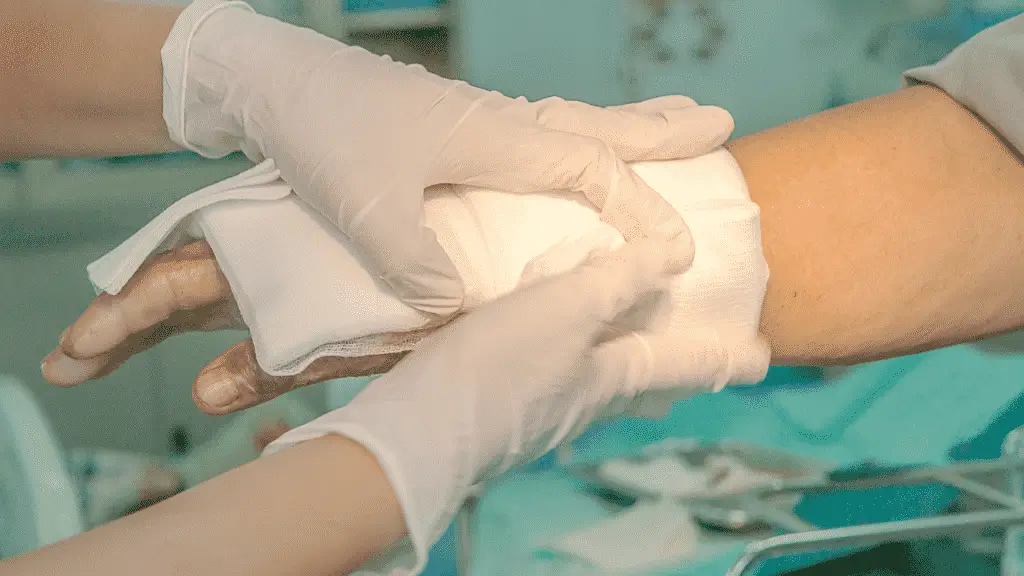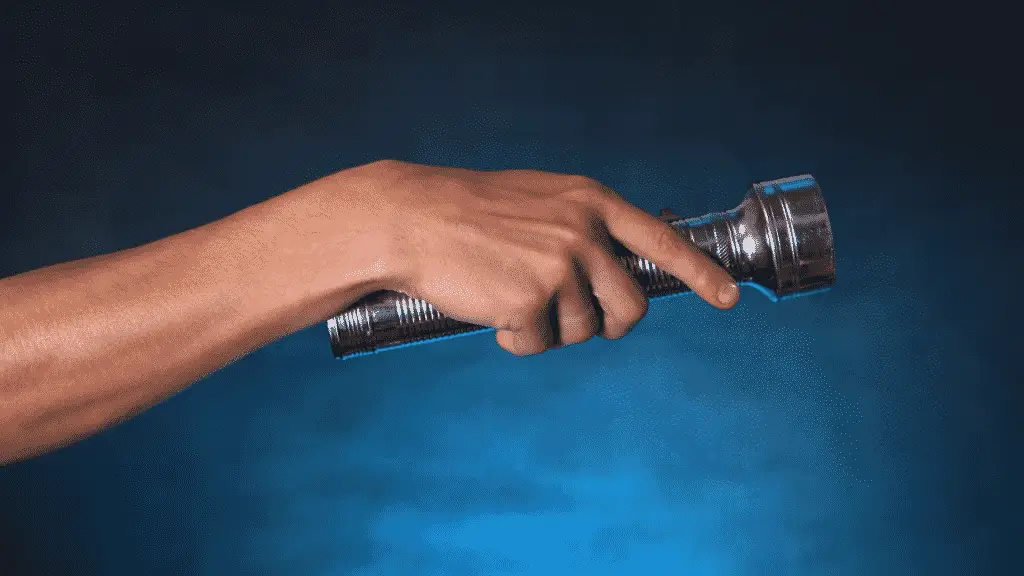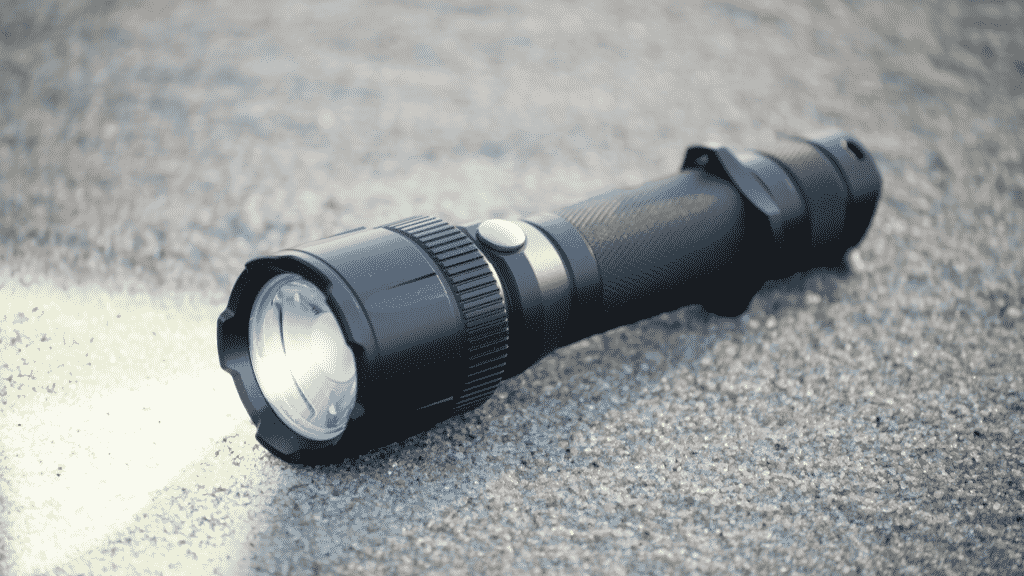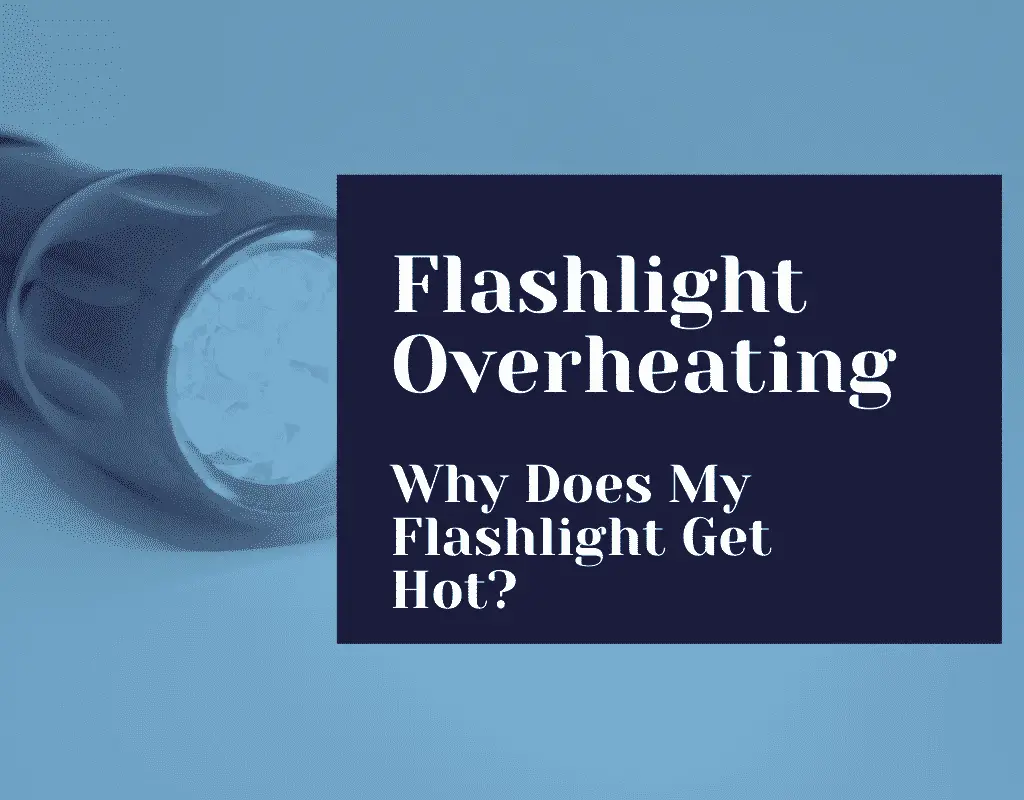Anybody that’s ever bought a flashlight has asked a simple question: why does my flashlight get hot? It doesn’t matter what kind of flashlight you buy, LED, incandescent, and halogen flashlights will heat up some, but when does heat become a problem? You don’t want your flashlight to overheat and cause a fire, so it’s important to understand what normal flashlight heat feels like.
Why Is My Flashlight Getting Hot? Every flashlight produces heat when it burns through the batteries. The amount of heat that’s released depends on the brightness and efficiency of the bulb. Led bulbs use 75% less heat than incandescent and 90% less than halogen so they don’t get as hot. High quality flashlights direct the heat away from the electronics and prevent an overheating frame.
It’s perfectly normal for high lumen flashlights to heat up, but there’s a point where you need to replace or repair the flashlight. In the rest of this post I’ll explain how much heat is acceptable, and go over a few factors that prevent overheating flashlights.
Table Of Contents
Why Does My Flashlight Get Hot? How Do I Know If My Flashlight’s Overheating?
Flashlights will always heat up after turning them on. When you burn energy it’s always released into the surrounding environment as heat. How much heat that’s released depends on the efficiency of the bulb and the flashlights design controls the speed that it’s released.
Going with a high efficiency LED bulb is the first step to reducing heat. LED Flashlights still get hot, but they’re more energy efficient than incandescent and halogen designs so they won’t get as hot. They use 25% of the energy of incandescent bulbs and 10% of halogen bulbs. Burning through less energy equals less heat released per lumen.
With that being said there will still be a lot of heat released through a high lumen LED flashlight. A 1000 lumen flashlight will reach the same temperatures as a 250 lumen incandescent bulb. That’s a similar lumen rating to a typical incandescent light bulb that you would use in your house. Anybody that’s touched a hot incandescent bulb knows that it doesn’t take long to burn you!
So the end of a high lumen LED flashlight will get hot when it’s turned up to the maximum setting. How hot it gets depends on the frame design, but it will feel hot to the touch and can burn your fingers. A well designed frame should direct most of the heat away from your hand, but a slightly warm frame is perfectly normal.
- High lumen value flashlights will always be hotter due to increased energy usage.
- Using the highest brightness setting will increase the temperature of your flashlight.
- Holding a flashlight allows more heat to escape the frame (it shouldn’t feel like it’s burning your hand).
- LED flashlight bulbs use less energy so they will be cooler than other lights with similar lumen values.
- Aluminum flashlight frames allow heat to escape faster than steel and plastic bodies.
- Flashlight fins and ridges increase the surface area of the body speeding up heat transfer.
- Step down settings reduces energy usage to prevent overheating on high brightness settings.
- Larger head/body styles allow heat to escape the body faster (large surface area).
What Should I Do With An Overheating Flashlight?

Most people don’t have the skills required to repair an overheating flashlight so you can either replace it or get it fixed under warranty. Overheating issues have the potential to start fires so it’s not safe to ignore them. Almost every flashlight in the $30+ range have lifetime warranties and they usually send a replacement without making you send it in for repairs.
Fires and explosions have the potential to cause serious burns and injury so it’s better to throw away cheap flashlights that have overheating issues. Check out Coast Flashlights if you’re on a tight budget. Coast flashlights may not be pretty, but they perform way above their price range. Even the cheap $10-$20 flashlights should last for decades without problems.
1. High Lumen Ratings Increase The Heat Of LED Flashlights
High lumen flashlights will almost always use heat sinks to move heat away from the sensitive electronics and LEDs in the flashlight. Once you get into true 2,500-10,000 lumen rating flashlight designs, you’re dealing with a flashlight that’s basically a light cannon. That’s the same lumen range that would be put out of a typical marine spotlight for a boat so it’s a lot of a light and energy.
A 2,500 lumen LED flashlight won’t produce the same amount of heat as an incandescent, but it’s still using a lot of energy. Even if it’s using 25% of the energy of a typical incandescent flashlight, it’s generating the same amount of heat as a 625 lumen incandescent. Anybody that’s used a high lumen incandescent knows that they can get hot fast!
High lumen LED flashlights won’t get as hot as traditional bulbs, but they’ll still generate a lot of heat as you increase brightness. There are ways to combat this with specialized flashlight designs that I’ll get into below, but you may still notice the body/end of your flashlight heating up. You should always reduce the brightness setting if you ever notice that your led flashlight is heating up.
2. Don’t Always Use The Highest Brightness Setting
It’s tempting to always use the highest brightness setting, but that’s usually not necessary with high lumen flashlights. Most of the time the low/medium brightness setting is all you need. All it takes is 150-200 lumens to walk around outside at night and 60-100 lumens to navigate inside a house.
Using the highest lumen setting is overkill in 99% of cases. It will drain your battery fast and cause the flashlight to overheat if you’re using it for an extended period of time. Dropping down to a lower brightness setting will instantly cut down the temperature.
You may want to check out one of my other posts that has a flashlight lumen rating chart. It explains how many lumens are needed for a variety of tasks.
3. Holding A Flashlight Reduces Heat

Some flashlights have clips so that you can attach them to your body. You see this a lot with tactical flashlights designed for police/military use. That great from a functional standpoint, but it can lead to overheating issues over extended times.
Flashlights are designed to transmit heat through their frame so it can be absorbed into your hand. That’s not a big deal with low lumen flashlights or if you’re only using them for a 15-30 minutes at a time, but it can be an issue with high 400+ lumen flashlights.
4. LED Flashlight Bulbs Are Cooler Than Incandescent/Halogen
As I mentioned above, LED bulbs will always produce less heat than incandescent/halogen bulbs with similar lumen ratings. LED bulbs are more efficient so they can produce more light while using less energy. They can still get hot once you get into the 1000+ lumen range, but it shouldn’t be a problem if you’re only occasionally using the maximum brightness setting.
5. Aluminum Flashlight Frames Allow Heat To Escape Faster
Most manufacturers have switched over to aluminum frames since they’re lighter and better at conducting heat, but you still find plastic/steel frames on cheap flashlights. Aluminum frames are designed to transmit heat through the frame so it can be absorbed into your hand.
It’s perfectly normal for a flashlight frame to warm up your hand, but it shouldn’t feel uncomfortably hot. A slightly warm flashlight is fine, but burning your hand is unacceptable. If the flashlight feels like it’s overheating either send it in to be repaired or throw it away. Overheating can cause the battery to heat up and potentially catch on fire or explode.
6. Flashlight Fins and Ridges Reduce Heat
Almost every high lumen flashlight have fins on the design that look like tiny ridges spaced apart. These fins are used to increase the surface area of the aluminum body. It’s basically an oversized thermal heat sink on the outside of the flashlight body to cut down heat.
More aluminum equals a larger surface area for the heat to be released and lower flashlight temperatures. We wouldn’t be able to have high lumen compact flashlights without fins and ridges.
7. Step Down Settings Prevent Overheating
Some flashlights are capable of extremely high brightness settings, but only for a few minutes at a time. If they would maintain the brightness the flashlight would overheat and damage the electronics in the flashlight.
So manufacturers build a failsafe into the flashlight to reduce the brightness when the flashlight starts to overheat. Step down settings reduce the brightness by turning it to a lower setting or they may just turn off the flashlight with basic models.
8. Larger Flashlight Heads/Bodies Speed Up Heat Loss
Flashlights need to find a way to release the heat that’s generated by lighting up the bulb. They release heat by transmitting it through the frame and into your hand and surrounding air. Manufacturers speed up heat transfer by increasing the surface area of the flashlight body.
Aluminum frames and fins help deal with heat, but it might not be enough with high lumen flashlights. The only other way to increase the surface area is to increase the frame/head size. Most of the heat is released through the frame, but the flashlight head will always be hotter than the grip. Manufacturers increase the surface area of the head by using oversized flared heads and bezels.
It’s Normal For Flashlights To Get Hot On The Highest Brightness Setting

Almost every flashlight will heat up on the highest brightness setting. It doesn’t matter what type of bulb the flashlights using. When you turn on a flashlight it will burn through energy and produce heat. LED flashlights won’t get as hot as incandescent/halogen since they use less energy, but it will still heat up.
With that being said, there’s a big difference between a flashlight that’s warm to the touch and one that’s burning your hand. Flashlights direct most of the heat through the head where the bulbs located and the rest of the heat through the frame.
Most manufacturers have switched over to aluminum frames since they’re the best at conducting heat, but there are still steel/plastic designs available. Aluminum frames are designed to conduct heat through the body so it can be absorbed into your hand. So it’s perfectly normal for a flashlight to feel warm in the hand.
The end of a high lumen flashlight will get hot to the touch (possibly burning your finger), but the body shouldn’t get that hot. If the body of your flashlight is too hot to hold that usually means there’s a short somewhere in the circuit. In the best case scenario it damages the electronics/LEDs, worst case the battery explodes or catches fire.



